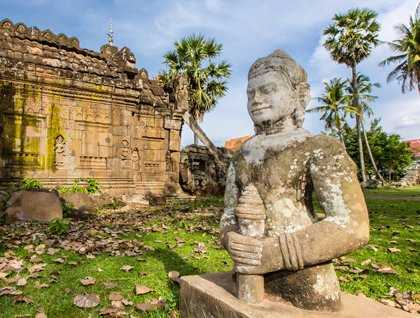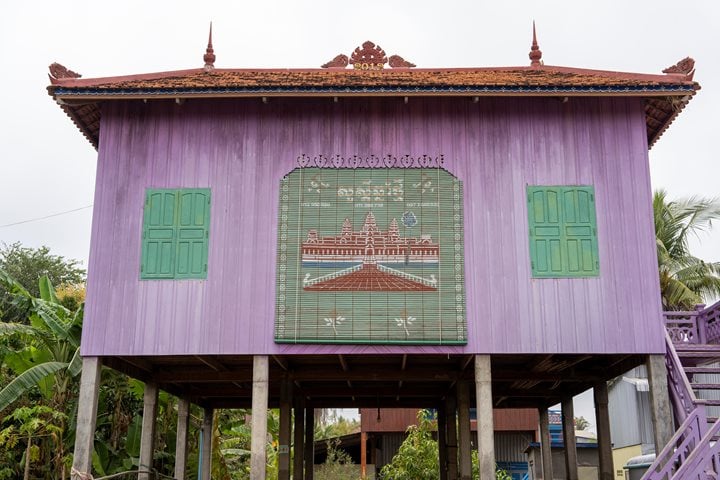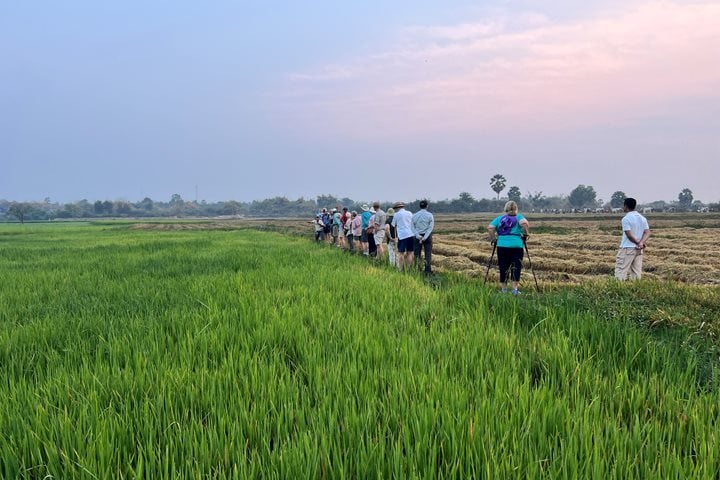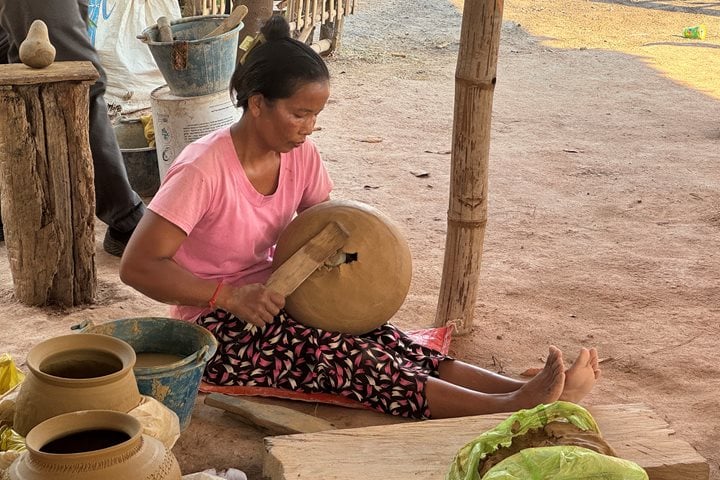Today, we spent our last full day on the Jahan. At 6:30 a.m. we ventured out to Wat Hanchey, also known as Hanchey Kiri, a contemporary Buddhist temple and monastery complex, built on a prominent hill. Our group members were excited about the option to ride on a “hog” or moto with the locals. It was only $1 for the ride. Arriving at the top at the temple, one gets a commanding view of the Mekong River. The site still has a seventh century brick structure of a Hindu temple dedicated to Shiva. The brightly colored temple has giant fruit sculptures everywhere. A handsome gibbon would catch our attention.
Back on the Jahan, we awaited two monks to arrive to do a blessing ceremony for guests and Jahan staff on the terrace deck. Two chairs are arranged in front of a table, filled with flowers and fruit. The blessing was recited in both Pali and Khmer, while water was sprinkled on the respectful crew seated on the floor with heads bowed and hands pressed together. Donations were collected for the monks and their temple, and fruit and food were offered to the monks. One of the guides explained the proceedings and answered questions. It is customary to show respect to the monks by touching the ground or moving the hands in prayer three times to indicate the Buddha, Dharma (or Teachings) and the Sangha (or Monkhood).
Just before lunch, I gave a lecture on the Angkorian temples. Shortly after lunch, the ship arrived at Kompong Cham and docked near the Japanese Friendship Bridge. At 3:00 p.m., before disembarking, Jean Michel Filippi gave a short informative lecture on the Khmer language. We then left the ship for our excursion to Wat Nokor, a modern temple and monastery with a rather interesting ruined late 12th century Buddhist temple, built by the greatest Khmer King Jayavarman VII (r, 1180-1220). It provided a preview of the style and structure of temples we will be exploring in Siem Reap. What is really unique is the fact that a more recent colourful Hinayana Buddhist pavilion has been created within the central court of the older temple. The ancient temple showed distinctive signs of shelling with blackened walls. This occurred in the 1970’s by Lon Nol’s troops.
On the way back to the Jahan, we stopped to view the town’s amazing bamboo bridge, which lasts only six months and then has to be rebuilt when the flood waters recede. It was nerve-racking to walk on the bouncy and flimsy bridge as heavy cars drove by. Several people walked back two miles or so to the Jahan.
As this was our final evening on the Jahan, various festive events were planned, including a staff presentation. All staff members, who have made our stay so pleasant and assisted us in every way possible - getting us drinks, cleaning our shoes after excursions, providing delicious meals - were recognized. Our final dinner had a fun dessert presentation delivered in the dark with sparklers. We also found out that the ship staff had photographed our every move, excursion and activity on or off the ship and the resulting slide show was shown with music and much laughter. What a great idea to capture our fun memories.









